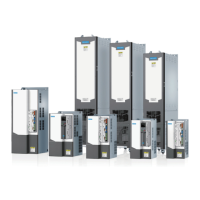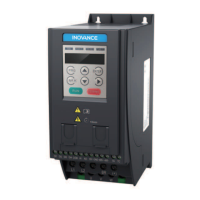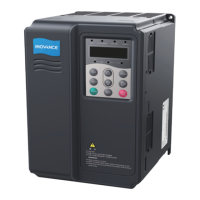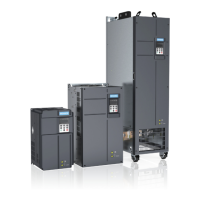Function Applications
-504-
Table 4–35 Parameters related to frequency detection
Para.
No.
Name
Default
Value Range Description
F8-22
Frequency
detection value
(FDT1)
50.00 Hz
0 to maximum
frequency (F0-
10)
When the running frequency is higher than the
frequency detection value (FDT1), the DO/RO
terminal outputs an active signal; when the
running frequency is lower than the result of the
frequency detection value (FDT1) minus the
frequency detection hysteresis (FDT1), the DO/RO
terminal outputs an inactive signal. The valid
value range is 0.00 Hz to F0-10 (maximum
frequency).
F8-23
Frequency
detection hysteresis
rate (FDT1)
2.5 Hz 0.00 Hz to F8-22
When the running frequency is higher than F8-22,
the DO/RO terminal outputs an active signal.
When the running frequency is lower than a
specific value (F8-22 minus F8-23), the DO/RO
terminal outputs an inactive signal.
F8-24
Frequency
detection value
(FDT2)
50.00 Hz
0 to maximum
frequency (F0-
10)
When the running frequency is higher than the
frequency detection value (FDT2), the DO/RO
terminal outputs an active signal; when the
running frequency is lower than the result of the
frequency detection value (FDT2) minus the
frequency detection hysteresis (FDT2), the DO/RO
terminal outputs an inactive signal. The valid
value range is 0.00 Hz to F0-10 (maximum
frequency).
F8-25
Frequency
detection hysteresis
rate (FDT2)
2.5 Hz 0.00 Hz to F8-24
When the running frequency is higher than F8-24,
the DO/RO terminal outputs an active signal.
When the running frequency is lower than a
specific value (F8-24 minus F8-25), the DO/RO
terminal outputs an inactive signal.
4.5.2.3 Vibration Suppression
The jump frequency enables the AC drive to avoid any frequency at which a mechanical resonance may
occur. The AC drive supports two frequency jump points. If both are set to 0, the frequency jump
function is disabled.
Figure 4-56 Jump frequency

